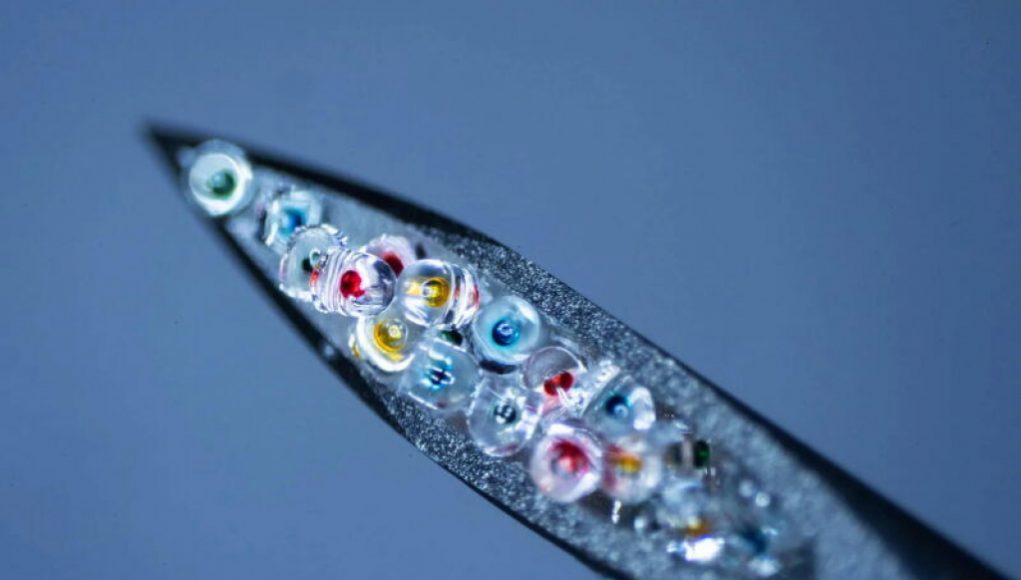Did you know that patients with chronic illnesses only follow their prescribed treatments about 50 percent of the time? That’s a big problem because if medications aren’t taken regularly and correctly, the treatment may not work, and the person’s condition can worsen.
But it’s not that people are unwilling to take their prescriptions. The issue is that some drugs, like HIV medications, require unwavering commitment. And essential medicines, like insulin, can be incredibly expensive. On top of that, the Covid pandemic highlighted the challenges of delivering perishable follow-up vaccine shots to regions without proper refrigeration. So, are we really getting the most out of these drugs and vaccines? The answer is often no, and we’re missing out on a lot.
Take the injectable drug bevacizumab, for example. It can effectively treat macular degeneration, a leading cause of blindness. However, many patients struggle with adherence to the dosing schedule because they dislike getting injections into their eyes. It’s understandable why they would feel that way.

But there’s hope. Kevin McHugh, a bioengineer at Rice University, and his lab are in the business of drug delivery. Their goal is to provide patients with a solution that is less of a hassle while ensuring consistent dosing. Their answer? Injection of drug-delivering microparticles that release their contents over a period of days or even weeks. They’re engineering these delivery systems to work in the real world, not just in an idealized version of it.
In a recent study published in Advanced Materials, McHugh’s team explained how their system works. They inject hundreds of tiny microplastic particles, each containing a small dose of a drug. These capsules are made of a polymer called PLGA, which our bodies can safely break down. By adjusting the molecular weight of the polymer used for each capsule, the scientists can control how fast they erode and release the medication. In their study, they demonstrated a single shot containing four groups of microparticles that released their contents at different intervals after injection.
Advertisement
“Having long-acting delivery strategies is a great unmet need,” says SriniVas Sadda, an ophthalmologist with UCLA and the Doheny Eye Institute. He emphasizes that missed appointments can be a big problem, especially for elderly patients who may have transportation issues or other health problems. The ability to provide consistent treatment is crucial because missing visits can lead to the worsening of the disease, and sometimes, there’s no way to recover.
Controlling the levels of a drug in the body is challenging because most medications have a rapid spike in levels followed by a tapering off. Extended-release pills help prolong the drug’s effect, but they still have a peak and decline. It’s not as simple as front-loading a steep dose to delay the next one because some drugs have a narrow therapeutic window. This is where McHugh’s research becomes even more important.
Interestingly, the problem becomes more daunting with the development of new and advanced drugs. Biologics, which include proteins, hormones, and gene therapies, are more complex than traditional small molecules. They rarely work orally but offer great potency and specificity. The challenge now is to make them last longer.
McHugh’s journey in drug delivery began during his postdoctoral fellowship at MIT. His team experimented with encasing drugs in polymers and developed microparticles using PLGA, a polymer that has been used in FDA-approved treatments for decades. They discovered that changing the polymer’s molecular weight could delay its degradation and the release of the drug. However, the technique was expensive and difficult to scale up, especially for applications like vaccines that need to be low-cost.
When McHugh established his own lab at Rice University, he and his team reevaluated their process. They found a simpler solution by eliminating unnecessary steps. Instead of using a “bucket and lid” approach, they now inject microplastic particles directly. This innovation brings them closer to their goal of making drug delivery more efficient and accessible.
In recent years, scientists have revolutionized the health industry with the invention of a single-dose drug with continuous dosing (SDCD). This groundbreaking new therapy promises to drastically reduce the time it takes to administer medications, eliminate the need for costly visits, and provide more efficient care for patients.
SDCD is an FDA approved technology that has been proven to rapidly bio-accumulate up to 9 hours of sustained dosing exposure. This type of therapy allows patients to receive an initial dose of medication with the option to extend the effect by taking additional doses at regular intervals. By doing so, SDCD eliminates the need to monitor patients daily, access medical records, and develop a personally tailored medical plan.
SDCD is ideal for those suffering from chronic illnesses such as cancer, epilepsy, HIV/AIDS, and multiple sclerosis. This kind of therapy has the potential to not only streamline the process of administering medications, but also improve the quality of care and increase patient satisfaction. This technology has already been implemented in the form of a wearable device, allowing patients to constantly monitor and update their dosages.
Aside from the convenience and efficiency provided by the device, SDCD also helps reduce medication-related errors. By eliminating the need to monitor medication dose and frequency, it reduces the possibility of incorrect delivery and ingestion of the wrong dose. Additionally, it reduces the risk of medication-related side effects such as drowsiness and nausea.
Overall, SDCD is set to revolutionize the medical industry. By providing a fast, reliable, and more efficient system of dosing, patients can be sure they are receiving the best possible medications. The one-shot drug with continuous dosing is a welcome alternative to conventional methods, and its use is likely to continue to improve the quality of healthcare.




















